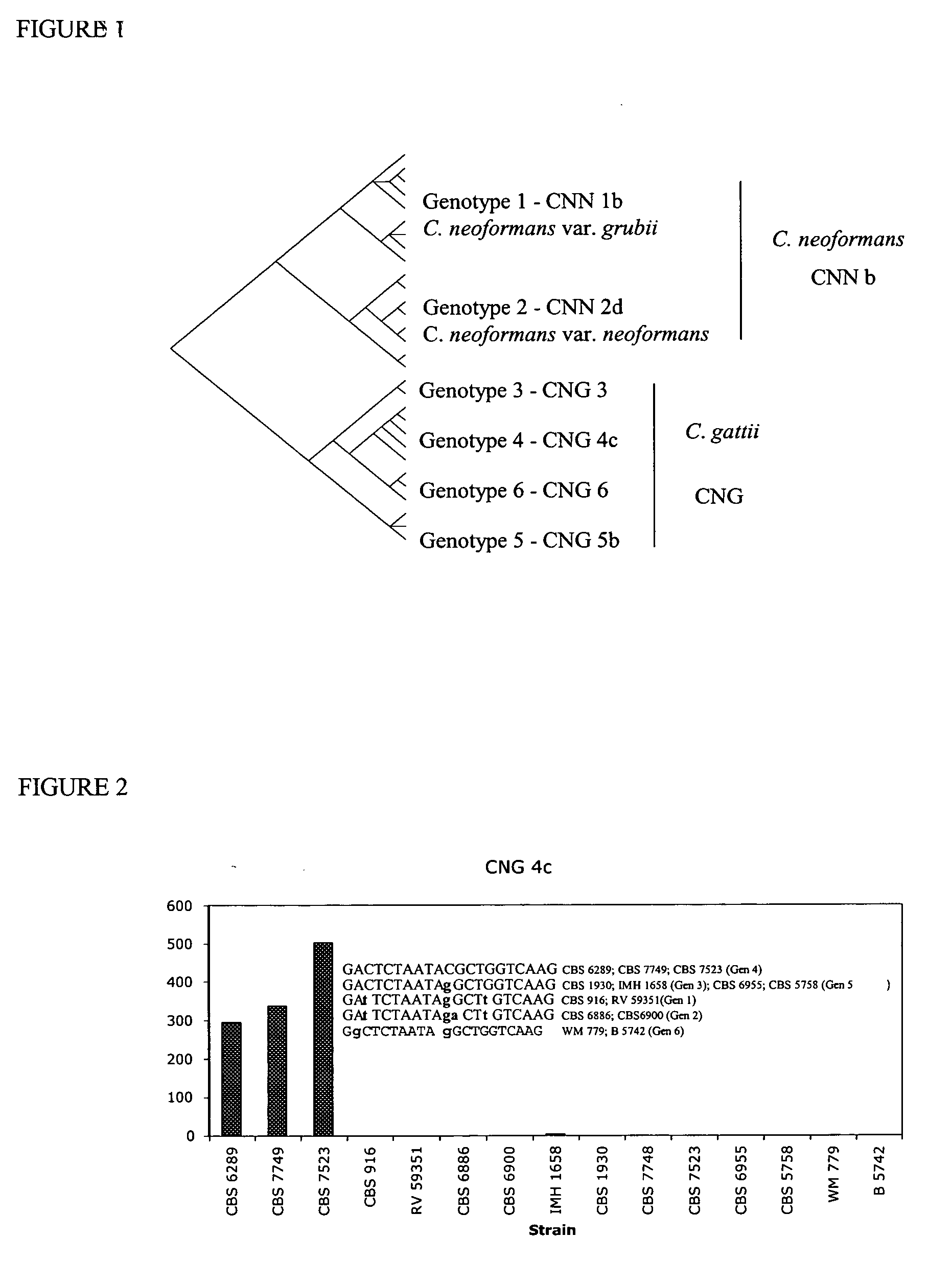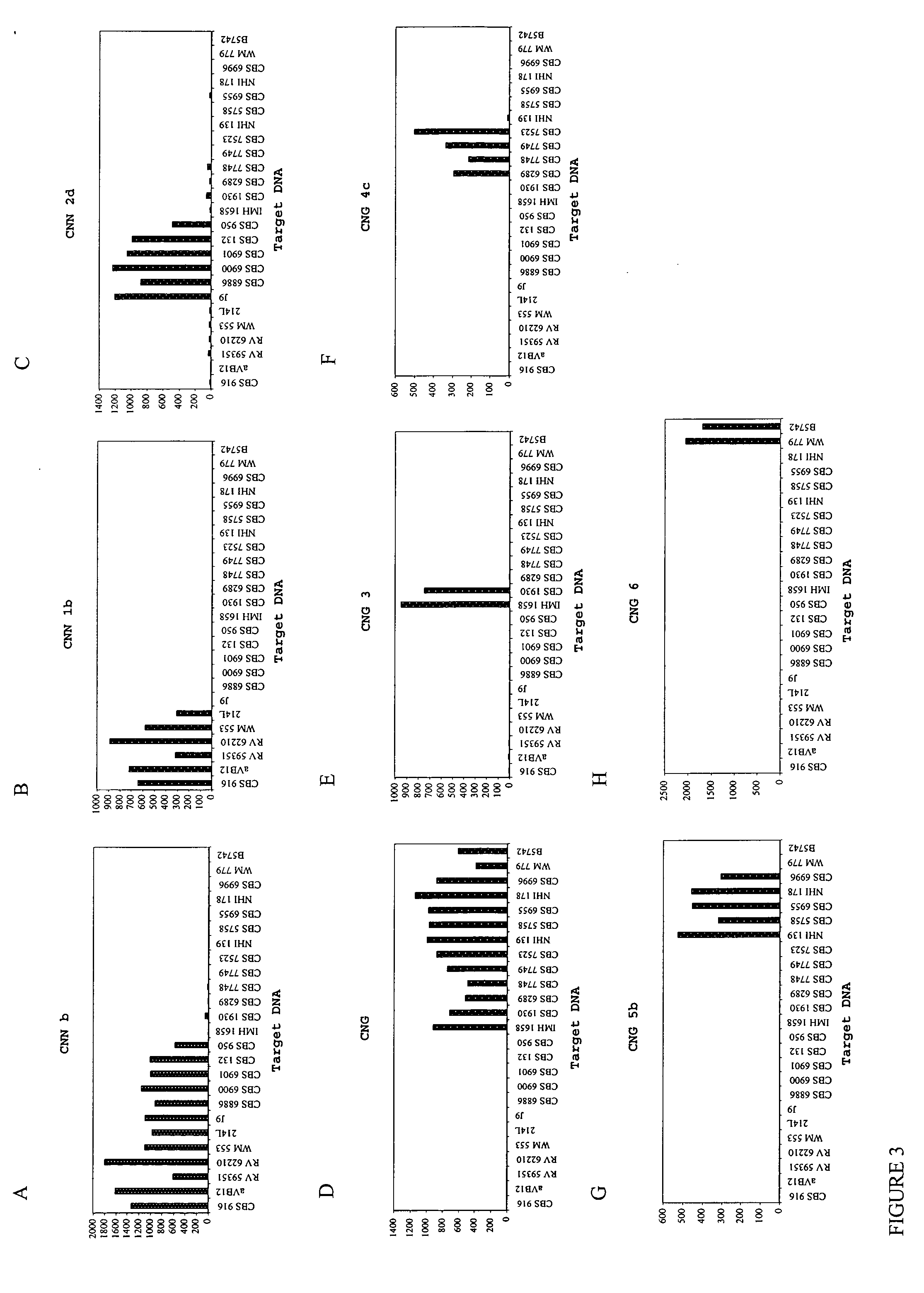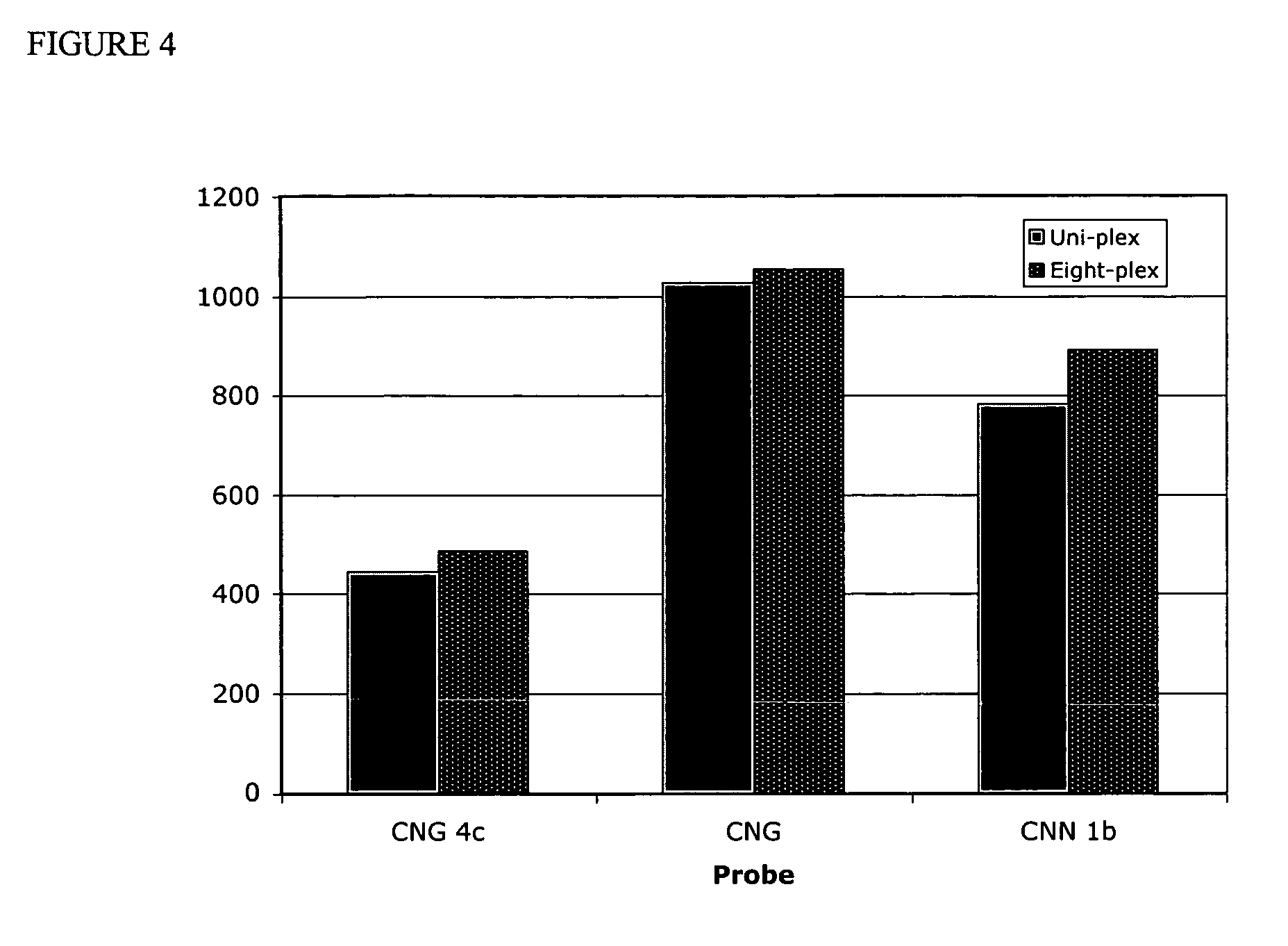Rapid identification of the varieties and genotypes of cryptococcus neoformans species complex using a high-throughput flow cytometer
a high-throughput, flow-cytometer technology, applied in the field of species-specific nucleic acid probes, can solve the problems of erroneous identification, diagnosis and treatment, delay of treatment, and continued serious and fatal diseas
- Summary
- Abstract
- Description
- Claims
- Application Information
AI Technical Summary
Benefits of technology
Problems solved by technology
Method used
Image
Examples
example 1
Probe Specificity
[0040] Eight probes were designed to target the varieties and genotypic groups of the C. neoformans species complex. The probes were tested and validated with ˜66 clinical and environmental isolates listed in Tables 1 and 3. The probes were designed to have a GC content higher than 30%, Tm higher than 50° C. and a length of 21 bases. Some of the designed probes did not follow the above parameters. For example, CNG 5b displays a Tm of 48.5° C. and CNN 1b is a 20 mer oligo. All probes were coupled at 0.2 nmol, except for CNG 5b, which used 0.5 nmol. The probe sequences are depicted in Table 2.
[0041] The specificity of each probe was tested against the positive control (perfect match), negative controls (more than three mismatches) and cross-reactive groups (one to three mistmatches). Six probes, represented by CNN 1b (genotype1); CNN 2d (genotype 2); CNG 3 (genotype 3); CNG 4c (genotype 4); CNG 5b (genotype 5) and CNG 6 (genotype 6) were developed to identify the g...
example 2
Probe Multiplexing
[0045] Experiments were designed to test the multiplex capability of the assay employing multiple probes in a single reaction. After the probes were pooled they were challenged with a single amplicon target per well. The results showed that all probes performed similarly when tested in uni-plex and eight-plex format. For example, FIG. 4 shows that the signal intensity of probes CNG 4c, CNG, and CNN 1b were not dramatically different when the probes were tested in both plex formats as the fluorescent signals of the uni-plex vs the eight-plex format differ by only 8, 2.7 and 12%, respectively.
example 3
Probe Validation with Blind Test Isolates Derived From Clinical and Environmental Sources
[0046] Probe validation was undertaken with a blind collection of isolated DNA comprised of 16 clinical and environmental strains. Fourteen samples were clinical isolates from HIV positive individuals recovered from various hospitals in Portugal, except for CN 79, which originated from Institute Pasteur in Paris. Two strains, PYCC 5025 and CN 112 were recovered from environmental sources. Table 3 describes the source of isolation, serotype, and origin for each of the isolates, which were disclosed after conducting the blind testing. Employing our multiplex assay format, we determined without ambiguity, the varietal status and genotypic classification for each of the strains (Table 3). The varietal classification was in agreement to those submitted by the donors, who used an array of morphological, biochemical and PCR molecular techniques to identify the isolates (Dr. I. Spencer-Martins, person...
PUM
| Property | Measurement | Unit |
|---|---|---|
| Time | aaaaa | aaaaa |
| Nanoscale particle size | aaaaa | aaaaa |
| Wavelength | aaaaa | aaaaa |
Abstract
Description
Claims
Application Information
 Login to View More
Login to View More - R&D
- Intellectual Property
- Life Sciences
- Materials
- Tech Scout
- Unparalleled Data Quality
- Higher Quality Content
- 60% Fewer Hallucinations
Browse by: Latest US Patents, China's latest patents, Technical Efficacy Thesaurus, Application Domain, Technology Topic, Popular Technical Reports.
© 2025 PatSnap. All rights reserved.Legal|Privacy policy|Modern Slavery Act Transparency Statement|Sitemap|About US| Contact US: help@patsnap.com



